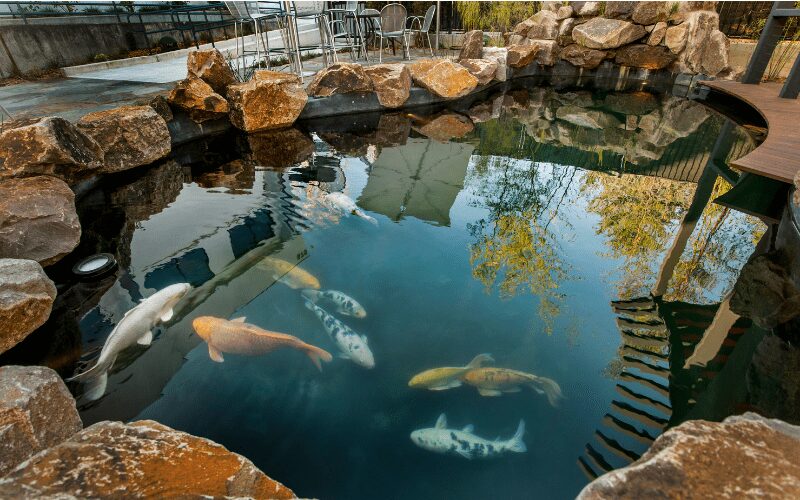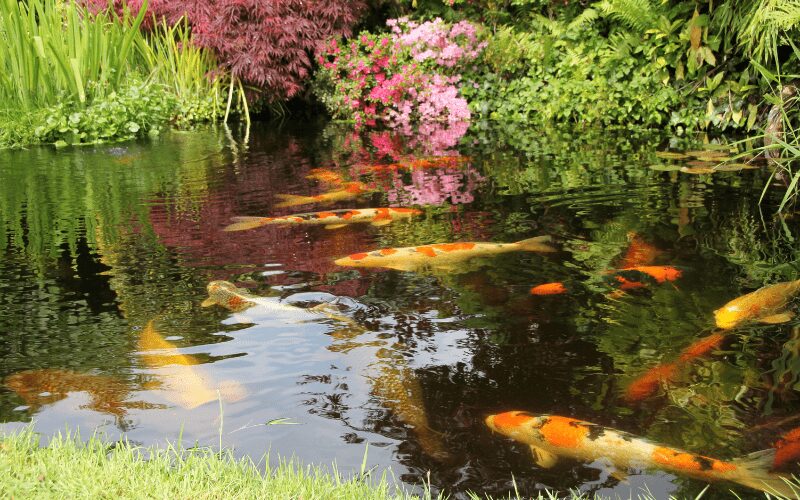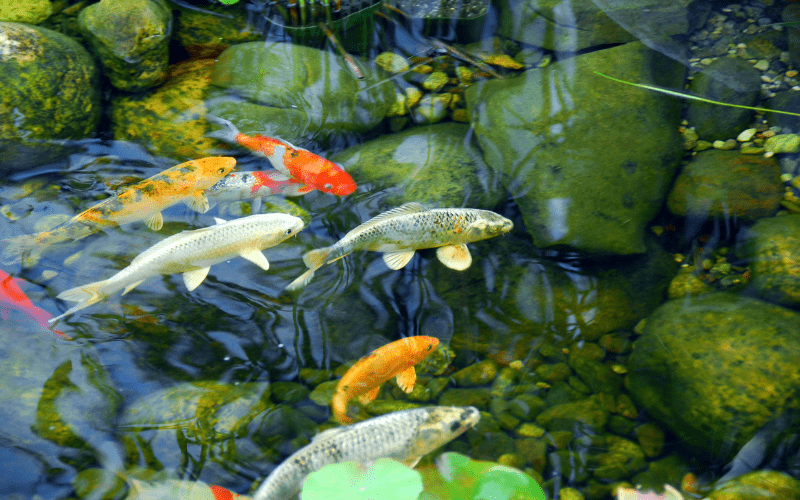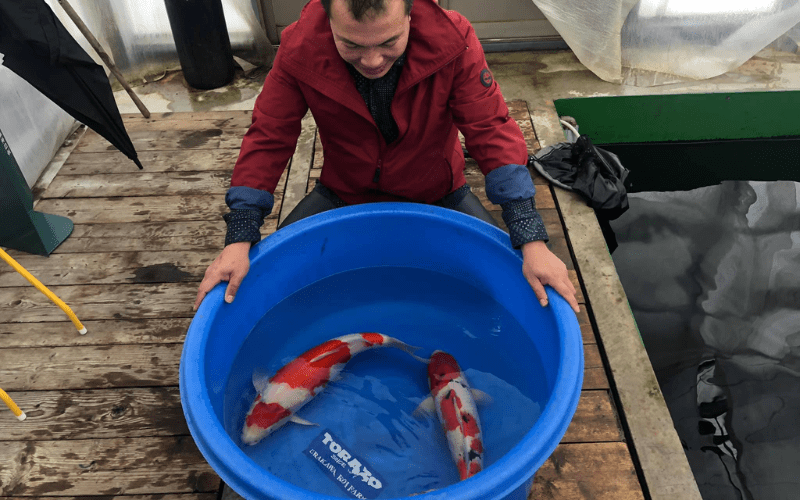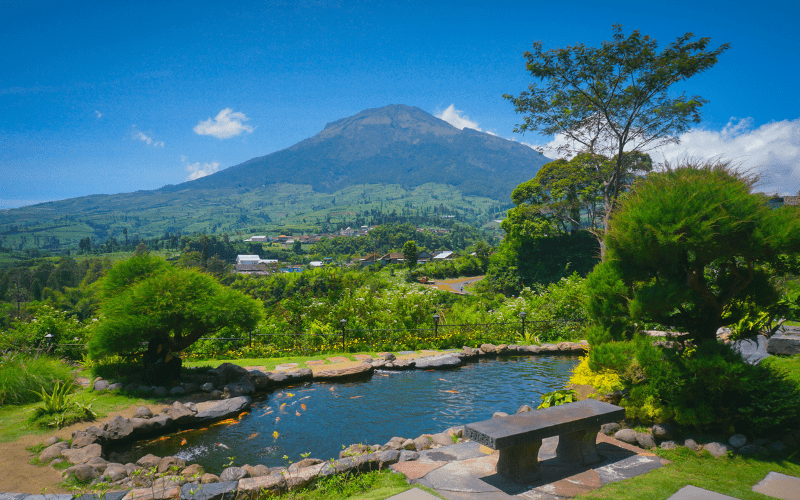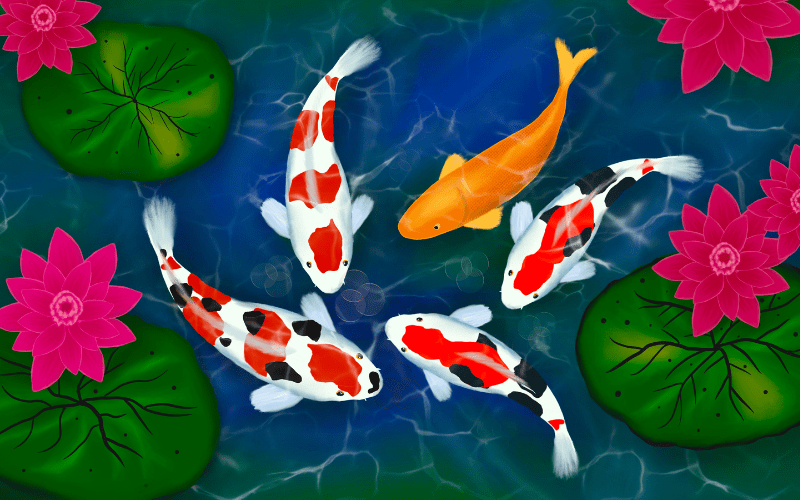Introduction to Koi Ponds
Koi ponds are not just a beautiful addition to your garden; they are a sanctuary for the magnificent koi fish. These vibrant and elegant fish are renowned for their beauty and longevity, often living for several decades with proper care. However, creating and maintaining a koi pond requires careful planning and consistent upkeep. This guide will walk you through everything you need to know about building and maintaining a koi pond, ensuring your koi thrive in their new habitat. Torii Koi And Pond provides the best pond building and maintenance services, ensuring your pond remains a pristine and healthy environment for your fish.
Planning Your Koi Pond
Choosing the Right Location
Selecting the right location for your koi pond is crucial. Ideally, you want a spot that receives partial sunlight and shade throughout the day. Too much direct sunlight can lead to excessive algae growth, while too much shade can hinder plant growth and lower the water temperature. Avoid placing your pond near large trees to prevent leaves from falling into the water and causing water quality issues.
Determining the Size and Depth
The size and depth of your pond will directly impact the health and happiness of your koi. A general rule of thumb is to have at least 1,000 gallons of water and a minimum depth of 3 feet. This depth helps maintain stable water temperatures and provides koi with ample space to swim and grow. Larger ponds are always better as they offer a more stable environment and reduce the likelihood of water quality problems.
Budgeting for Your Pond
Building a koi pond can be a significant investment. Your budget should include costs for excavation, pond liner, filtration systems, pumps, plants, and, of course, the koi fish. Deciding between a DIY project and a professional installation will also affect your budget. While DIY can save money upfront, hiring professionals like Torii Koi And Pond ensures the job is done right the first time, potentially saving you money in the long run.
Designing Your Koi Pond
Pond Shapes and Styles
Koi ponds can be designed in various shapes and styles, from natural-looking ponds with irregular edges to formal, geometric designs. Natural ponds blend seamlessly into the landscape, while formal ponds offer a more structured and aesthetic appeal.
Essential Features
Incorporating features like waterfalls and streams not only enhances the pond’s beauty but also promotes aeration, which is crucial for maintaining oxygen levels in the water. Plant shelves and marginal areas allow for the growth of aquatic plants, which provide natural filtration and shelter for koi.
Choosing Pond Materials
Selecting the right materials is vital for the longevity and functionality of your pond. Liners come in various types, including rubber, PVC, and concrete. Rubber liners are flexible and durable, while concrete is more permanent but requires professional installation. Edging materials such as stone, brick, and tile can add a finishing touch to your pond’s appearance.
Building Your Koi Pond
Excavation and Site Preparation
The first step in building your pond is excavation. Ensure the hole is level and the sides are sloped to prevent collapse. Proper site preparation includes removing rocks and debris that could damage the liner.
Installing the Liner
The liner is a critical component that holds the water. Different liners have different installation methods, but all require careful handling to avoid punctures. Once the liner is in place, fill the pond with water and check for leaks.
Setting Up Filtration Systems
A good filtration system is essential for maintaining clean and healthy water. Mechanical filters remove debris, while biological filters house beneficial bacteria that break down waste. UV clarifiers help control algae growth.
Adding Water and Testing
After filling the pond, test the water for pH levels, ammonia, nitrites, and nitrates. Adjust as necessary to create a safe environment for your koi. Ideally, the pH should be between 7.0 and 8.5, with ammonia and nitrite levels at zero.
Introducing Koi to Your Pond
Selecting Healthy Koi Fish
When choosing koi, look for fish that are active and have vibrant colors. Avoid fish with visible signs of disease such as spots, sores, or clamped fins. Torii Koi And Pond offers a wide selection of healthy koi to start your pond.
Acclimating Koi to the Pond
Acclimating your koi to their new environment is crucial to minimize stress. Float the bag containing the koi in the pond water for about 20-30 minutes to equalize temperatures, then gradually add pond water to the bag before releasing the fish.
Pond Maintenance Essentials
Routine Maintenance Tasks
Maintaining a koi pond involves daily, weekly, and monthly tasks. Daily tasks include checking the water temperature and feeding the koi. Weekly tasks involve cleaning skimmers and checking water quality parameters. Monthly tasks include thorough cleaning of filters and pumps.
Water Quality Management
Maintaining optimal water quality is crucial for the health of your koi. Regularly test the water for pH, ammonia, nitrite, and nitrate levels. Use water conditioners to neutralize harmful chemicals and maintain a balanced ecosystem.
Filtration System Maintenance
Clean mechanical filters regularly to remove debris. Biological filters should be cleaned less frequently to preserve beneficial bacteria. Check pumps and UV clarifiers to ensure they are functioning correctly.
Plant Care
Aquatic plants play a vital role in your pond’s ecosystem. Choose plants that thrive in your climate and provide natural filtration. Regularly prune and fertilize plants to keep them healthy and prevent overgrowth.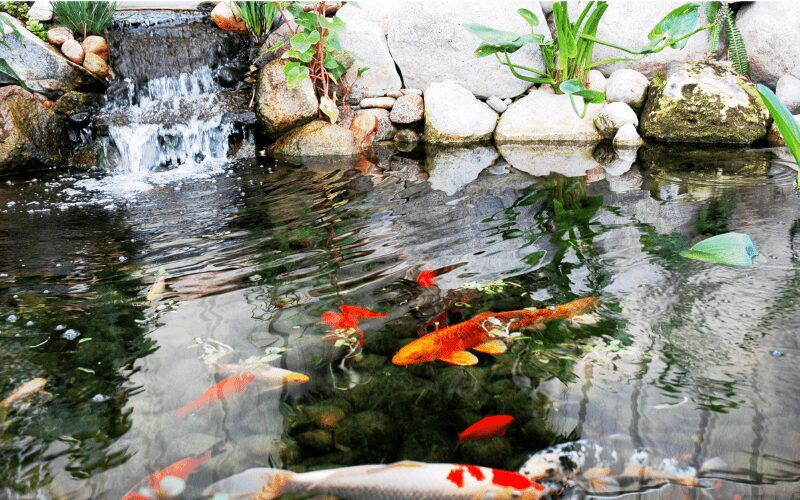
Health and Well-being of Koi Fish
Recognizing Common Health Issues
Koi are susceptible to various diseases and parasites. Common symptoms include changes in behavior, loss of appetite, and visible sores or lesions. Early detection and treatment are essential to prevent outbreaks.
Feeding Koi
Koi require a balanced diet to thrive. Feed them high-quality koi food and supplement them with fresh vegetables and fruits. Avoid overfeeding, as excess food can pollute the water and harm the fish.
Behavioral Observations
Observing your koi’s behavior can provide insights into their health. Healthy koi are active, have bright colors, and interact with their environment. Stress or illness may cause koi to become lethargic, hide, or display unusual swimming patterns.
Seasonal Considerations
Spring Start-Up
As the weather warms up, it’s time to clean and restart your pond. Remove debris, check equipment, and gradually reintroduce feeding as water temperatures rise.
Summer Care
High temperatures can stress koi and promote algae growth. Increase aeration, provide shade, and monitor water quality closely during the summer months.
Autumn Preparation
Prepare your pond for fall by controlling leaf litter with netting and adjusting feeding practices as temperatures drop. Ensure your filtration system is functioning well to handle the increased organic load.
Winterizing Your Pond
In colder climates, winterizing your pond is essential. Use pond heaters or de-icers to maintain an opening in the ice for gas exchange. Reduce feeding as koi’s metabolism slows down.
Troubleshooting Common Problems
Water Quality Issues
Cloudy or green water can indicate water quality problems. Use appropriate treatments and adjust filtration to resolve these issues. Regular water changes can also help maintain clarity.
Filtration and Pump Problems
Leaks, clogs, and noisy pumps are common issues. Regular maintenance and prompt repairs can prevent these problems from escalating. Check seals, clean impellers, and replace worn parts as needed.
Fish Health Concerns
Parasites, infections, and injuries require prompt attention. Isolate affected fish and treat them with appropriate medications. Consulting with a vet experienced in koi health can be beneficial.
Enhancing Your Koi Pond
Aesthetic Enhancements
Adding lighting, decorative features, and landscaping can enhance the beauty of your koi pond. Consider underwater lights, floating plants, and rock formations to create a visually appealing environment.
Creating a Balanced Ecosystem
Introducing beneficial bacteria and encouraging natural predators like dragonflies can help maintain a balanced ecosystem. Avoid overstocking your pond to prevent overcrowding and stress.
Building Community with Other Koi Enthusiasts
Joining koi clubs and online forums can provide valuable support and resources. Participate in koi shows and events to learn from experienced keepers and share your passion for koi.
Koi Pond Maintenance Checklist
| Task | Frequency | Details |
|---|---|---|
| Check water temperature | Daily | Ensure the temperature is stable and within safe range for koi (50-85°F). |
| Feed koi fish | Daily | Feed a balanced diet, and adjust quantity based on water temperature. |
| Skim debris | Daily | Remove leaves and debris from the pond surface. |
| Test water quality | Weekly | Check pH, ammonia, nitrite, and nitrate levels. |
| Clean mechanical filters | Weekly | Remove and rinse filters to maintain efficiency. |
| Check pump and equipment | Weekly | Ensure pumps, filters, and aeration systems are functioning properly. |
| Prune aquatic plants | Monthly | Trim overgrown plants to maintain pond aesthetics and health. |
| Clean biological filters | Monthly | Rinse gently to preserve beneficial bacteria. |
| Perform water change | Monthly | Replace 10-20% of the pond water to maintain water quality. |
| Inspect for fish health | Ongoing | Observe koi behavior and appearance for signs of stress or illness. |
Frequently Asked Questions (FAQs)
- What is the ideal depth for a koi pond?
- The ideal depth is at least 3 feet to maintain stable temperatures and provide ample swimming space.
- How often should I clean my pond filter?
- Mechanical filters should be cleaned weekly, while biological filters can be cleaned monthly.
- What should I do if my koi fish are not eating?
- Check water quality, and temperature, and look for signs of illness. Stress or illness can cause koi to stop eating.
- Can I keep koi fish in a pond during winter?
- Yes, but you need to winterize the pond to prevent it from freezing solid and ensure proper gas exchange.
- How do I prevent algae growth in my koi pond?
- Maintain good water quality, use UV clarifiers, and add aquatic plants to compete with algae for nutrients.
Key Points To Remember
- Start with thorough planning and design to ensure a healthy and sustainable koi pond.
- Regular maintenance and water quality management are crucial for the well-being of koi fish.
- Understanding seasonal needs and preparing the pond accordingly can prevent many common issues.
- Educate yourself on koi health and behavior to quickly identify and address problems.
- Enhance the beauty and functionality of your pond with thoughtful design and community engagement.
Conclusion
Building and maintaining a koi pond is a rewarding endeavor that brings beauty and tranquility to your garden. By following this comprehensive guide and seeking professional assistance from Torii Koi And Pond, you can create a thriving habitat for your koi fish. Remember, the key to a successful koi pond lies in meticulous planning, regular maintenance, and a deep understanding of your koi’s needs. Happy pond keeping!
Torii Koi And Pond provides the best koi pond building and maintenance services to ensure your pond remains a pristine and healthy environment for your koi fish.

